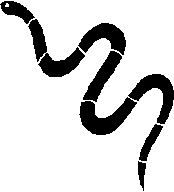|
A huge factor in mating/reproduction of the cottonmouth is
geographic variation and the amount of resources readily available
to the snake (especially for the female). Their energy budget is mainly
affected by the variation in abundance of prey throughout the
seasons.
like mammals, snakes practice in internal fertilization
in which the male sperm is introduced directly into the female's
reproductive organ, the cloaca. Instead of a penis the male has a
pair or copulatory organs called hemipenes. During mating only one
pair of hemipenes is actually used. The other is used as a backup!
BACK TO TOP
WEBSITE CREATED BY: Michael Connor
|


